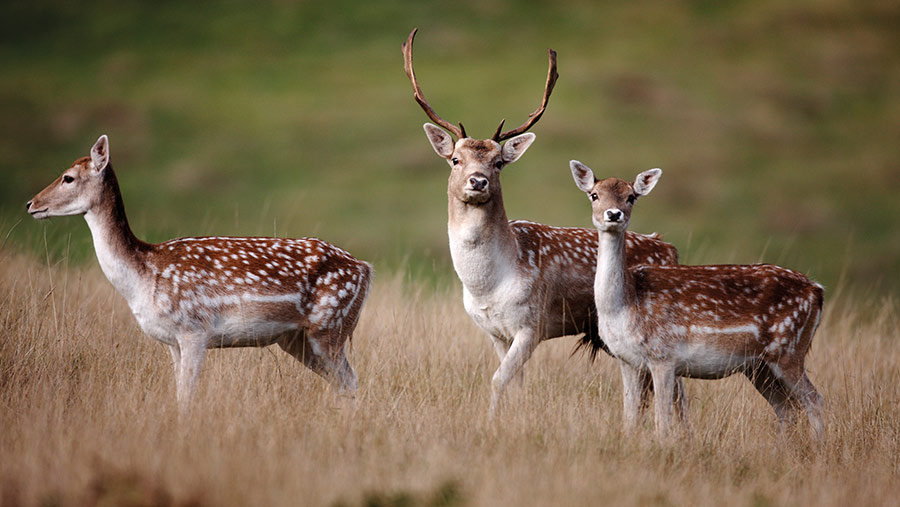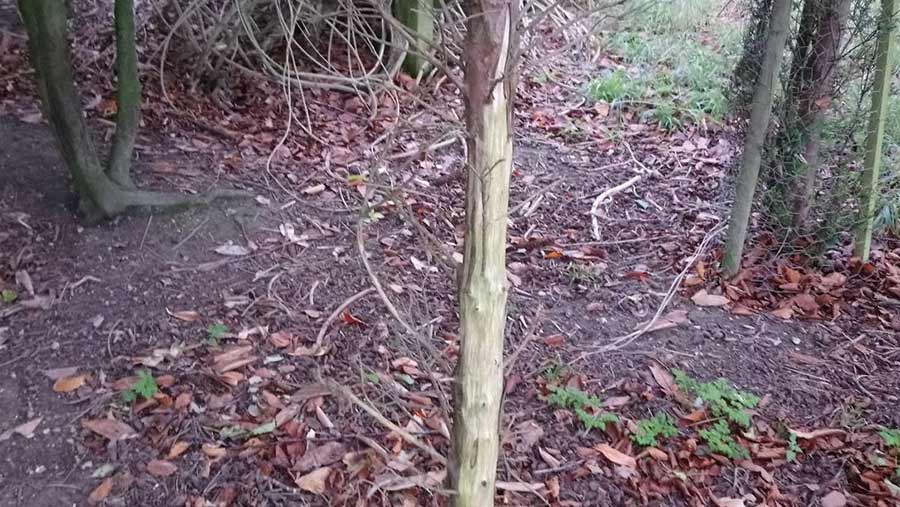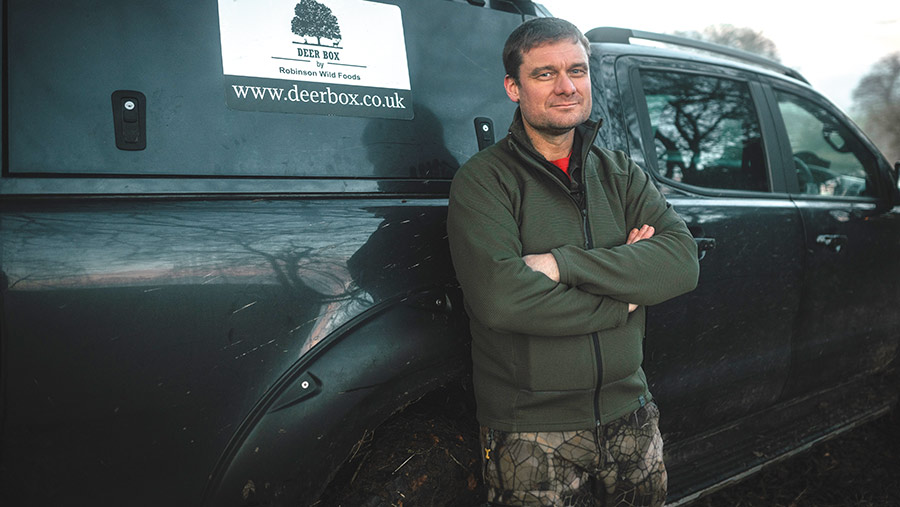Charlie Flindt: We need to talk about deer numbers
 © Erni/Adobe Stock
© Erni/Adobe Stock It has been obvious for some time that we need to talk about deer – or, more specifically, the explosion in their numbers.
There can’t be a farmer or landowner in the country who hasn’t noticed how numbers have increased.
See also: Defra sets out plan to curb soaring deer numbers
Fifty years ago, a trip around the farm sitting on the fold-down rear flap of Dad’s 109 was my treat on a Sunday away from boarding school.
Coming down the hill, out of the woods one winter afternoon, Dad suddenly stood on the brakes. “Look – deer!” he shouted through the sliding rear window of the cab.
By the time I’d untangled myself from the heap of baler twine, thumbsticks and bits of barbed wire into which I had rolled, they were gone.
Half a century later, I was sitting on the lawn with a cold beer, enjoying the late July heat at the end of a long harvest day.
A doe was standing not 50 yards away, grazing nervously in the orchard while two fawns did “zoomies” between the apple trees.
Just a couple of days later, one of the three or four herds of roe that are now regulars around our patch of Hampshire burst out of the undergrowth as I walked past.
One youngster ran headfirst into my Belgian Malinois, bundling her over. She now gives that patch of scrub a very wide berth.
The proliferation of deer has direct consequences when it comes to establishing woodlands. And like farmers all over the country, we are looking into a selection of tree-planting projects.

© Charlie Flindt
The simple bit of the quote is the trees themselves.
The complicated – and expensive – bit covers the selection of guards and stakes that will be essential, while the disclaimer about “animal damage” is lengthy and comprehensive.
Meanwhile, my landlord loves the idea of us planting trees, but would rather we didn’t use tree guards at all.
Something, as they say, must be done.
England deer management strategy
Defra is keen to talk about the deer problem, so much so that it launched an official consultation at the start of August.
For a government document, it is remarkably plain-speaking. Surging deer numbers and hugely ambitious tree-planting plans are mutually exclusive, it says.
It estimates that the deer population is now as high in the UK as it has been for 1,000 years – probably around the 2m mark.
One of the inevitable statistics for the modern era is that there are an estimated 74,000 deer-vehicle collisions every year.
The consultation document also reports cases of individual arable farmers losing more than £1m/year to deer damage.
Timber production can also be severely hit, with final crop values reduced by up to 50% through browsing damage.
It also pointed out that wildlife habitats in existing woodland undergrowth can be entirely wiped out, and new trees, either planted or naturally regenerated in woodland, may be grazed off by browsing deer.
The report acknowledges that shooting is unquestionably the most practical way of getting on top of deer populations, but says numbers are still getting ahead of culling.
It therefore asked for responses to common-sense suggestions such as tweaking the close seasons and making it easier to shoot at night – the latter a sensible, but perhaps not guaranteed, way to get round the inevitable clash with public access.
Of course, being a government document, it suggests more red tape to replace any easing of restrictions.
It suggests “all persons culling deer” should reach a “mandatory minimum standard”, and proposes the establishment of a National Deer Database to collate information on the problem.
Furthermore, a Great Britain Venison Working Group will look into capital grants for “necessary facilities and equipment” – one hopes that is shorthand for “high seats”, which sometimes only last for days on this estate.
The consultation ended at the start of September, and the industry awaits its verdict with interest.
Field-to-fork initiative
The British Association of Shooting and Conservation (Basc) is, not surprisingly, very much on board with the campaign to shoot more deer (see “England deer management strategy”).
Its ambition, however, is to take it one step further: persuade the public to eat them. Lots of them.
At first glance, this would seem quite a challenge.
Wild venison consumption has enough triggers (emotional ones, not the ones you pull) to send your typical Twitter-obsessed, tofu-eating Guardianista into a frenzy of furious tweets: using guns, killing animals, eating meat, restricting public access…
But sitting at a well-worn desk in his dog-filled office at The Deer Box’s HQ, at Ramsbury in Wiltshire, Ben Heath is fully behind the field-to-fork idea.

Ben Heath © The Deer Box
He and his team, including restaurant legend Mike Robinson, have been culling, processing and selling wild venison for many years, and Deer Box was a massive lockdown success story as the order-from-home market took off.
Mr Heath has a self-confidence and sense of conviction that suggest he could sell three boatloads of sand to the Gulf before breakfast.
“I’ve sold shot venison to vegans,” he claims, suggesting that vegans love the free-range concept, and the idea of protecting the environment from overpopulation of destructive grazers.
The fact the animal is killed quickly and efficiently in its natural environment by highly skilled marksmen scores highly on the eco-philosophical chart. Bullets make for the best unstressed meat, too, he adds (lead-free, of course).
The Deer Box’s converted barn is highly impressive – deer carcasses in one end, boxes of meat, insulated with eco-friendly wool, out the other end.
In between, multiple chilling rooms, and a handful of staff who sharpen, cut, pack and label in a calm, unhurried way.
The investment has been massive and Mr Heath relies on his furniture business in Newbury to pay the bills – for now.
The biggest challenge will be selling more meat.
The team at Deer Box know that it is all very well carting wild, butchered venison off to the smart restaurants of London to appear on chi-chi menus, but until venison loses its elite image and can sit on the supermarket shelf next to everyman beef (and not just in Waitrose), then demand will always lag behind production.
Venison also has to lose its reputation – an unfair one, according to Mr Heath – for being less tasty than more traditional meat.
And as numbers of deer increase, and the vast destructive herds of fallow spread south, getting rid of the meat will only get harder.
“We’re on it,” he says. “We’re doing pies and burgers. I firmly believe that a change is coming in attitudes to food.
“There are influencers out there driving a new wave of interest in ‘real food’, and nothing fits better into that category than free-range venison.”
Mr Heath is right about changing attitudes to food.
When my three children get together for a meal, talk always turns to “proper” cooking using “proper” raw ingredients. They love food provenance and, dare I use the word, sustainability.
My own trip home, down the A34, was interrupted by the inevitable Big Mac meal (I’m a great believer in supporting British and Irish potato growers and beef producers).
As I raced to finish my strawberry milkshake before my paper straw went too soggy, I pondered the multiple paradoxes of the day: public access versus stray bullets; vegans eating meat; “eco” tree planting versus large-scale killing of wildlife; we arable farmers and wannabe copse planters wanting as few deer as possible versus professional cullers wanting a healthy supply.
There was plenty of food for thought. On the way out of McDonald’s, I scanned the wall-mounted menu for a venison burger, but found none. Give it time.

